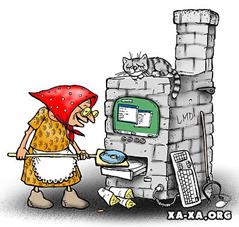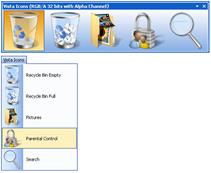VOCABULARY PRACTICE SECTION 2. 1. Here is a list of typical tasks performed by an operating system
1. Here is a list of typical tasks performed by an operating system. In each case the main verb has been omitted. Fill in the blanks from the words given (sometimes more than one may apply).
| execute monitor format diagnose |
A typical operating systemwill:
| 1. …… input and output devices. 2. …… the status of hardware devices. 3. …… hardware interrupts. 4. …… new disks. 5. …… disk directories. 6. …… disk reading and writingoperations. 7. …… disk errors. 8. …… disk commands relating to the deletion, copying, renaming, and dumping of files. | 
|
2. Match these common DOS commands with the appropriate explanation.
| 1. BACKUP | a. searches for a specific string of text in a file. |
| 2. CHDIR or CD | b. allows a text file from the current directory to be displayed on screen. |
| 3. CHKDSK | c. allows the user to change the name of a file. |
| 4. CLS | d. saves the contents of the hard disk to a floppy disk for security purposes. |
| 5. DEL | e. is used when it is necessary to change the current directory. |
| 6. DIR:SORT | f. clears data from the screen. |
| 7. REN | g. alphabetically sorts and lists a disk directory. |
| 8. TYPE | h. makes back-up copies of the contents of one disk to another. |
| 9. FIND | i. deletes a specified file from the current directory, specified drive or path. |
| 10. DISKCOPY | j. produces a status report of the currently logged-on disk, indicating the amount of disk space used, the available capacity (in bytes), and the number of files on disk.

|
3. Make two-word expressions by combining words from the two columns. Then match these expressions with the appropriate phrase.
| 1. work | a. system | 
|
| 2. user | b. scheduling | |
| 3. system | c. tasking | |
| 4. operating | d. processing | |
| 5. batch | e. software | |
| 6. device | f. utilities | |
| 7. application | g. interface | |
| 8. multi- | h. driver |
1. Running several programs at the same time in an efficient manner.
2. A group of computer programs that help manage the computer's resources, acting as an interface between the computer and application programs.
3. Routine used to interface and manage a peripheral.
4. Small programs which improve a system's performance and help users.
5. The way people interact with computers.
6. Computer software that is designed for a particular use or user.
7. Planning particular tasks to be performed by a computer at particular time.
8. A type of computer system in which the computer does several jobs one after the other, without needing instructions between each job.
4. Complete the texts using the words in the boxes.

| Operating systems |
| control functions MS-DOS software version Windows | |
| MS-DOS is operating system 1 … developed by Microsoft that controls and co-ordinates the basic 2 … of your computer. If you are using Windows 95 or a later 3 … of |
Windows, the functions of MS-DOS have been integrated. If you are using Windows 3.1x or do not have 4…, then you are relying on 5… (or a similar product from IBM called PC-DOS) to 6… the computer.
| commands icons Microsoft mouse multitasking user |
| Windows is a 7 … graphical 8 … interface for the IBM PC developed by 9 … Corp. that is designed to be easy to use. Windows uses 10 … to represent files and devices and can be controlled using a 11 … , unlike MS-DOS which | 
|
requires 12 … to be typed in.
| filenames interface Internet memory networks processor |
Windows 95 provides support for long 13 …, an 14 … that's easier to use and better support for 15 … and the 16 … It does, however, require a faster 17 … and more 18 … to get good results - an absolute minimum of 8Mb and a fast 80486 are required.
| communications configure enhanced features version |
Windows 98 is an 19 … 20 … of Microsoft's Windows 95 that provides more 21 … and internet 22 … and is easier to use and 23 … .
Дата добавления: 2015-07-30; просмотров: 2167;
